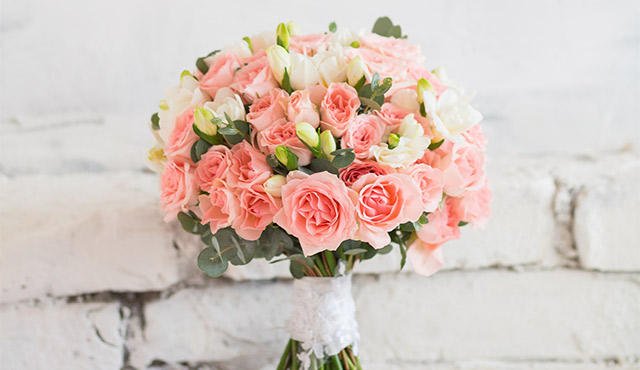Weddings today cost an average of $30,000, not including the honeymoon, but one of the most important investments a couple can make costs nothing – or very little.
According to Michael Donaldson, director of pastoral care for the Diocese of Orange, “Statistics confirm that couples married in a faith community have a significantly better chance for a successful marriage.”
For Catholics, being married in the church is not about a building, but about understanding and embracing the sacramental essence of Catholic marriage. It takes commitment and education to fully appreciate it.
Georgann Lovett, marriage preparation coordinator for Holy Family Cathedral and surrounding parishes, explains that Catholic weddings are profoundly different because Catholic marriage is a sacrament.
“People think the priest ‘marries’ the couple, but in fact, the priest is the official witness and facilitator,” Lovette says. “The couple ‘marries’ themselves when they bestow vows upon each other. The love between the couple creates the sacrament and together they become a living sacrament. To use the old Baltimore Catechism language – a sacrament is an ‘outward sign instituted by Christ to give grace.’ Once married, the couple becomes the outward sign of the sacrament of marriage and God’s grace envelops their family.”
Marriage preparation classes involve 10 hours of class time, usually four 2.5-hour sessions. First, the couple meets with their priest or deacon who will refer them to marriage preparation that should ideally be taken about six months before the wedding date. According to Lovett, “Some couples, especially couples that are not both Catholic, believe the classes are an attempt to ‘convert’ the non-Catholic, but the real goal is to help the two individuals become a loving couple. These classes are about getting into the core issues of what make a marriage work: communications, finances, conflict resolution and compatibility.”
“Marriage begins years before when children see their parents living out their holy marriage,” says Donaldson. The extent to which each person has experienced marriage in their ‘family of origin’ is very important to understanding the dynamics that a couple brings to the marriage.” This can be incredibly challenging for some couples. Marriage preparation draws heavily on Saint John Paul II’s ‘Theology of the Body,’ and the willingness of the man and woman to be open to life.
For couples entering a second marriage, the diocese also provides a special preparation course titled “To Trust Again.” Donaldson says that the issues are a somewhat different in second marriages.
“We talk about similar things as the original marriage preparation,” Donaldson explains, “but we also include issues surrounding blended families, and the different expectations a couple may have about remarriage.”
Natural family planning is an important part of the classes. Couples learn the risks of chemical and physical contraceptives and learn techniques to avoid or enhance pregnancy.
“The level of communication, dignity, intimacy and partnership achieved through natural family planning creates an incredibly strong bond,” Donaldson says. Some studies have shown that the divorce rate among couples who practice natural family planning is less than 5 percent.
With the price of a wedding on par with a down payment on a house, it is wise to invest in the tools that will make the marriage last, A marriage that begins with a couple who embrace each other as a sacrament and are committed to being the outward expression of the love between them, is by far the most important element of the wedding, not just the icing on the cake.

